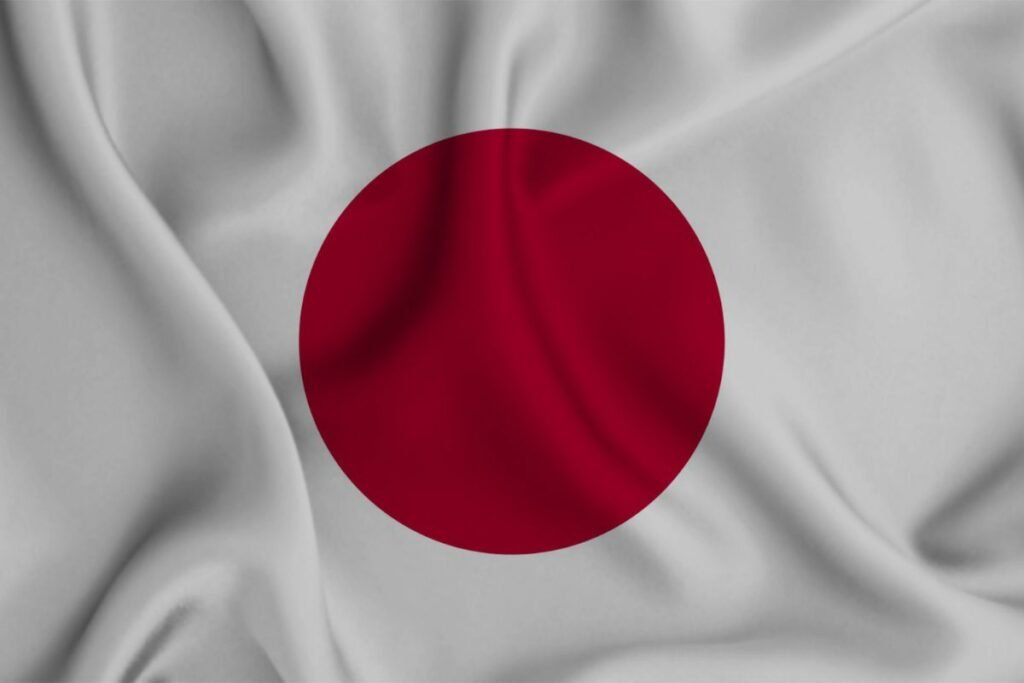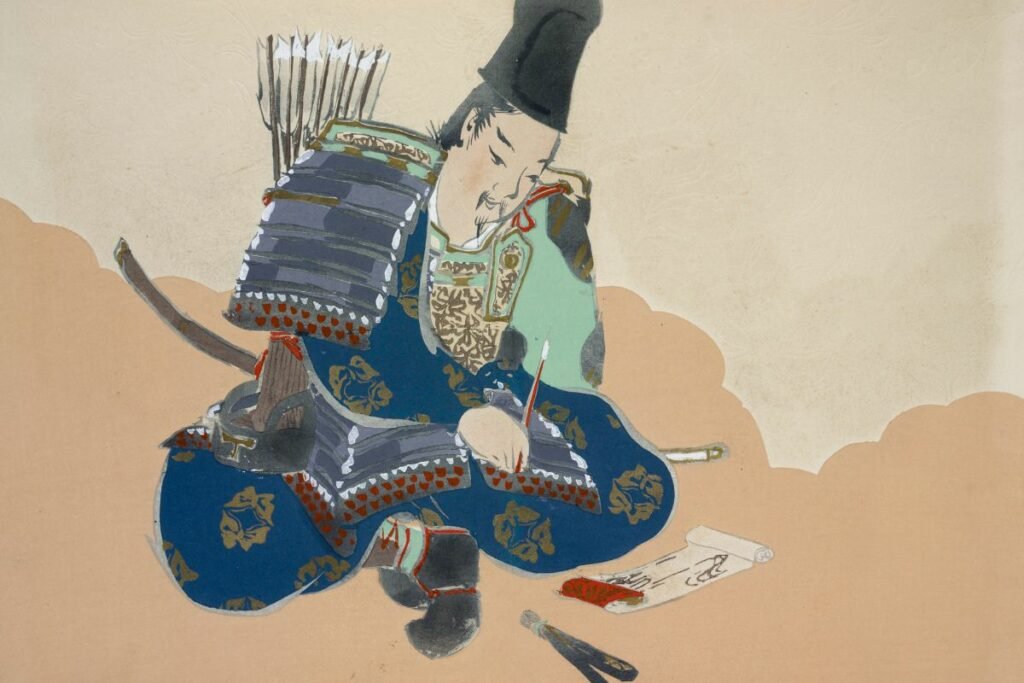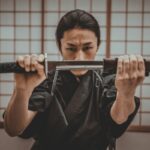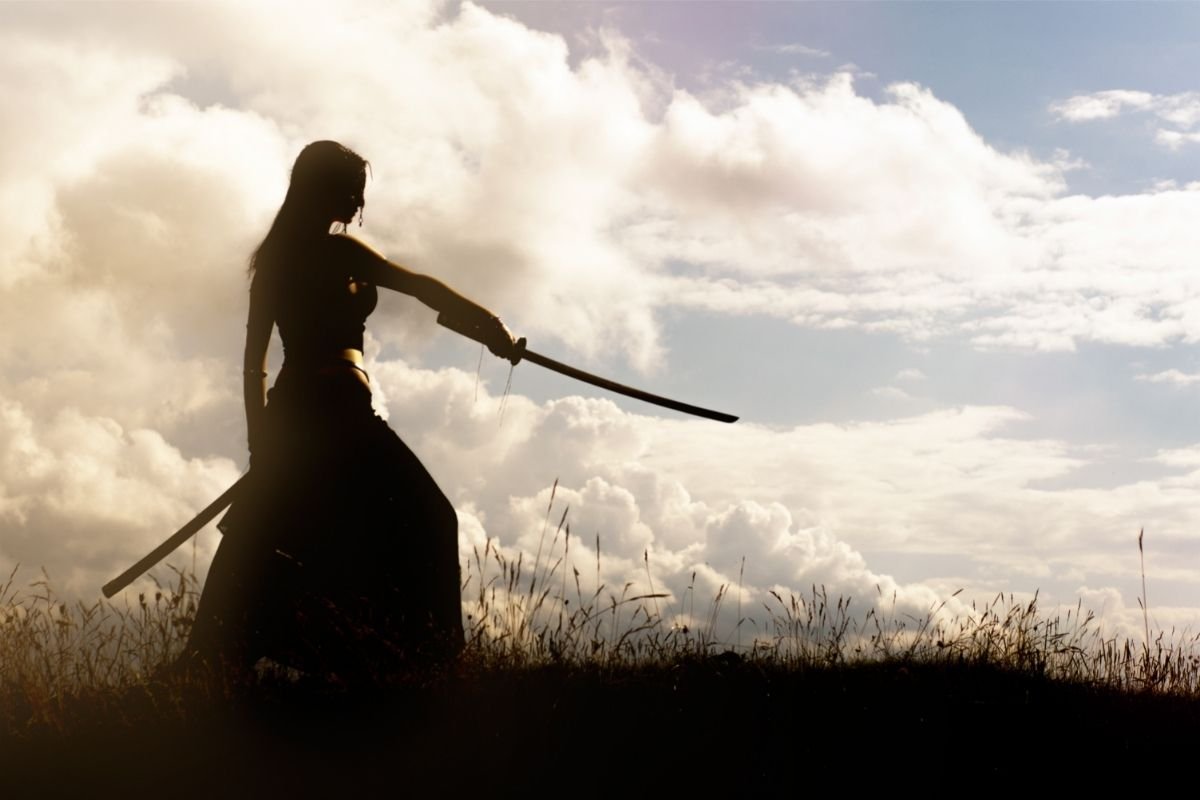Stories of spectacular battles and illustrious samurai fighters abound in the history of Japan’s 1467–1600 warring states period.
After the shogun’s central military administration disintegrated, the land was overrun by daimyo, strong warlords who ruled their respective clans and provinces.

Three daimyo became the most accomplished fighters of their time, commanding an army of 1000s, and were eventually referred to as the unifiers of Japan.
Warlords Toyotomi Hideyoshi, Oda Nobunaga, and Tokugawa Ieyasu collaborated and competed to create a nation out of a feudal battle zone.
The bloody soil of Tennoji near Osaka was the last battlefield that the Japanese ruler Tokugawa Ieyasu surveyed in 1615.
Although he had witnessed numerous conflicts throughout the entire kingdom, his task was finished at the age of 72.
His dominion had been established throughout all of Japan, as evidenced by the emperor’s naming him shogun, which roughly translates to “barbarian-quelling generalissimo.”
Ieyasu had not, however, ascended this summit alone. His contemporaries Toyotomi Hideyoshi and Oda Nobunaga were responsible for laying the groundwork for a united Japan.
The brutal unification of Japan is a unique chapter in military history since Ieyasu knew and actually fought alongside and against his forefathers. This article will discuss the unification of Japan and how three warlords worked together to create the historic unified nation.
Oda Nobunaga (Nobunaga The Conqueror) 1534-1582
When Nobunaga started on his own journey to prominence, he was a lowly daimyo (feudal lord). He assumed control of a clan known as the Oda clan after his father’s death in 1551. He was born in the Nagoya area in 1534.
He seized power of Owari Province, a well fortified, rice-rich center of operations, during a series of operations that ended in 1559.
The neighboring Imagawa clan struck, taking control of the castles in Marune and Washizu on the edge of Nobunaga’s domain after determining that the Oda clan had been weakened by the battle.
Imagawa Yoshimoto led 25,000 troops in a march toward Kyoto, where he planned to seize the imperial power base and appoint himself shogun.
Nobunaga led 3,000 Oda soldiers into position and intercepted the much greater opposing force in a famous victory that raised his and his clan’s status whilst the Imagawa army settled in a remote ravine.
Samurai, the military nobility of Japan, flocked to his cause. One of them was Kinoshita Tokichiro, an aspirational peasant who was destined for far better things than his lowly upbringing suggested. He became known to Japanese people as Toyotomi Hideyoshi over the years.
The Imagawa clan’s control over smaller daimyo was weakened by Nobunaga’s victory at the Battle of Okehazama in 1560, allowing him to extort them.
Matsudaira Moto-yasu, his domains, and his little but effective army were among the loot. History would refer to Motoyasu as Tokugawa Ieyasu. Thus, by 1561, all three rulers who would create a single Japan had been mentioned in the historic records.
Toyotomi Hideyoshi (Hideyoshi The Former Peasant) 1536-1598

Hideyoshi, who was born in 1536 to peasants in Nakamura, carved out the most extraordinary route to triumph in the Sengoku era. The ashigaru, or peasant foot troops, made up the rank of the samurai armies (see also, ‘What Was Samurai Armor Made Of?‘), where his father had served.
Despite the fact that there are numerous myths surrounding him, it is believed that Hideyoshi was once a servant of the Imagawa before fleeing with money given to him by the clan. But by 1558, Hideyoshi was fully employed by Nobunaga.
Hideyoshi was given ever-greater responsibilities, such as maintaining defenses and bargaining on his master’s behalf, by Nobunaga, who must have seen something exceptional in the lowly ashigaru.
Hideyoshi’s efforts are said to have been reflected in the comparatively simple capture of Inabayama Castle in 1561; by 1568, he was one of Nobunaga’s favorite generals.
Hideyoshi became a daimyo in 1573 after a string of victories, including a rearguard operation that successfully defended his lord’s retreat from the province of Echizen. The Oda clan also gave him control over three locations in Omi.
Following the killing of Nobunaga in 1582, Hideyoshi was in the ideal position due to his continuous ascent through the ranks.
After exacting revenge on the demise of his patron, he took over command of the biggest Japanese army ever amassed. More significantly, Hideyoshi agreed with Nobunaga’s vision of a united Japan.
Tokugawa Ieyasu (Ieyasu The Rebellious Vassal) 1543-1616
Ieyasu, born in Nagoya in 1542, was kidnapped at 6 years old and kept hostage by the Oda in 1548 amid the tense interclan rivalries of the time.
If the Tokugawa declined to break all links with the Imagawa, Nobunaga’s father, Nobuhide, vowed to assassinate Ieyasu. Nobuhide didn’t make good on his threat, but Ieyasu’s father resisted. If he had, the history of Japan might have taken a completely different course.
Ieyasu was held captive until he reached 14 years old, first by the Oda and later by the Imagawa, though as a future possible ally he was apparently treated well.
Ieyasu, after being granted permission to take charge of his clan, remained obedient towards the Imagawa and even, according to all accounts, once led forces in battle against the Oda.
He was able to express some independence after the Imagawa were finally defeated in 1560 thanks to his lifelong connection with Nobunaga.
The reason why Ieyasu was much more sincere in his devotion towards the Oda than he was to Hideyoshi is still unknown. He might have thought little of the latter’s modest beginnings or perhaps he anticipated that he would need to compete with Hideyoshi for control.
In 1585, Ieyasu established an alliance with Hideyoshi after the latter’s ascent to power and the ensuing, fruitless power conflicts. Following their united triumph at Odawara in 1590, the kampaku were free to divide the entire Hojo realm as they saw fit.
Ieyasu’s army marched north in 1600 to launch a preemptive attack on Hideyori’s faithful supporters, the Uesugi clan.
However, before he could strike, he heard information that a western force was approaching fast and turned to face the greater danger. The armies engaged in a foggy, disorganised battle in the ensuing Battle of Sekigahara.
Ieyasu’s superiority as a tactician emerged amid the conflict, and a sizable section of his adversary’s force defected, resulting in a resounding victory for the easterners.
Ieyasu became the absolute ruler of all of Japan after the winners tracked down and executed every last opposition leader over the course of the following several days.
Final Thoughts
The Toyotomi clan’s abolition marked the true completion of Japan’s unification. In order to avert further uprisings, the Tokugawa authorities implemented new regulations. In this new era of peace, samurai started to assume new responsibilities as administrators.
They nevertheless kept their preparation for battle. The three major unifiers of modern Japan are honored by the job they have accomplished.
Oda Nobunaga, Toyotomi Hideyoshi, and Tokugawa Ieyasu relentlessly pounded a constantly at war mass of feudal territories into a nation.
- Transport in Japan: Exploring Buses, Public Transportation, Railways, Bicycles, and Major Cities - April 3, 2024
- Exploring Japan: Prefecture and Regions of Japan - April 3, 2024
- Travel Guide: Visiting Mount Koya (Koya, Mount Koya, Koyasan) – A Pilgrimage to the Spiritual Heart of Wakayama in Kansai, Japan - April 2, 2024








